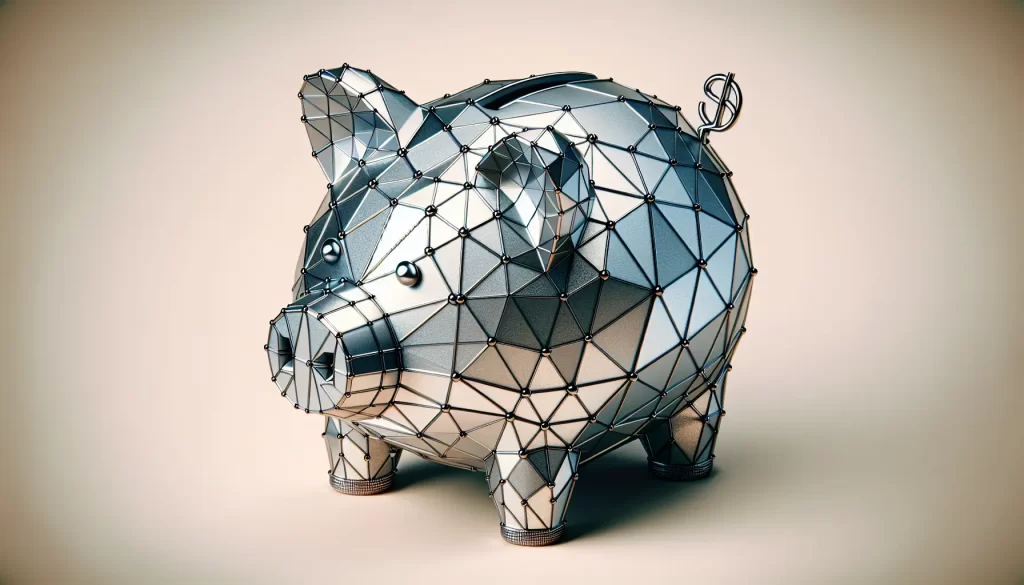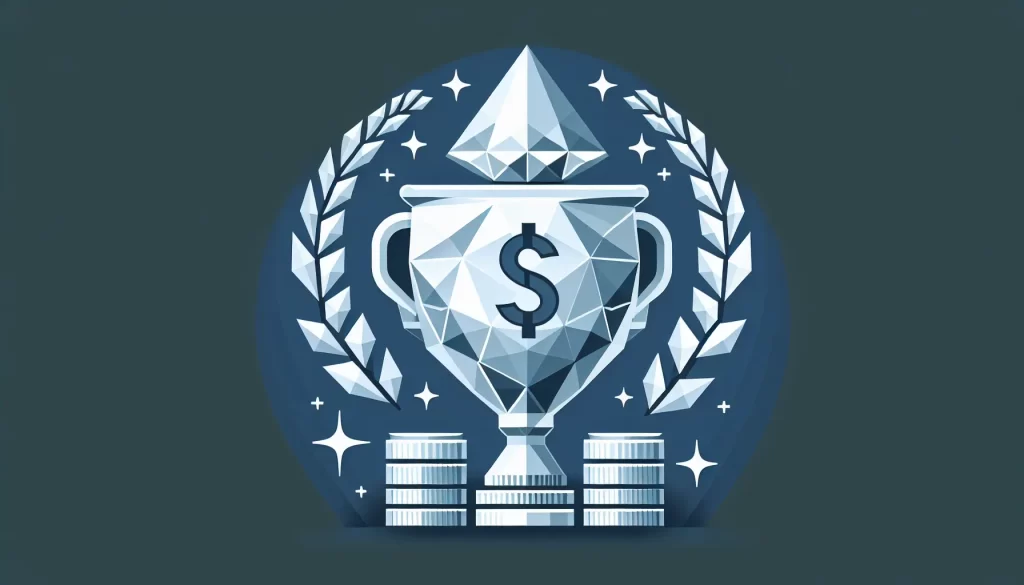Platinum has been an interest hedge against inflation, used by those looking for a precious metal investment.
But, like all precious metals there are pros and cons to consider before purchasing.
So, in this article we are going to discuss why platinum is so unique as well as prior trends for how it has performed in the past.
Quick Disclaimer:
The content provided in this article is for informational purposes only and should not be considered financial or investment advice. Always consult with a qualified financial advisor before making any decisions regarding Precious Metal or IRAs. Additionally, this article contains affiliate links, and I may earn a commission if you make a purchase through these links, at no additional cost to you.
What Makes Platinum Unique
So first, platinum is a unique and valuable investment choice due to its rarity and diverse industrial applications. According to the World Platinum Investment Council (WPIC), platinum is approximately 30 times rarer than gold.
This is likely because there are only an estimated 200 million ounces of platinum available above ground, compared to five billion ounces of gold. This scarcity makes platinum a highly sought-after metal in the investment market.
The price of platinum is predominantly influenced by industrial demand, particularly in sectors such as auto manufacturing and medical supplies.
For this reason, it is more volatile compared to gold, whose price is driven mainly by jewelry and investor demand.
But, platinum’s unique properties, such as its resistance to corrosion and high melting point, make it essential in various industrial applications, adding to its value.
And so of course, the doomsday prepper in me thinks that Gold may be more valuable in an end of the world situation, whereas platinum may be more valuable as a hedge against inflation.
But, that’s just me.

Platinum vs. Other Metals
When considering platinum investment funds, it’s crucial to understand how platinum compares to other metals like gold and silver.
So, after the points above – I wan’t to chart out some of the main points regarding platinum.
Here’s that quick comparison:
| Metal | Rarity | Main Demand Drivers | Annual Production (approx.) | Investment Characteristics |
|---|---|---|---|---|
| Platinum | 30x rarer than gold | Industrial (auto manufacturing, medical) | 160 tons | Volatile, influenced by industrial demand |
| Gold | More abundant | Jewelry, investment | 3,000 tons | Stable, driven by jewelry and investment demand |
| Silver | Less rare | Industrial, jewelry, investment | 27,000 tons | Volatile, driven by industrial and investment demand |
- Rarity: Platinum is significantly rarer than gold and silver, making it a unique investment opportunity.
- Demand Drivers: While gold and silver are driven by both industrial and investment demand, platinum’s price is heavily influenced by its industrial applications.
- Production: Platinum’s annual production is much lower compared to gold and silver, highlighting its scarcity.
Platinum can act as a hedge against inflation and serves as an investment option that may outperform gold in uncertain economic conditions (SmartAsset). Its scarcity and industrial demand make it an attractive addition to a diversified investment portfolio.
For more details on different ways to invest in platinum, check out our guide on how to invest in platinum.
If you’re interested in specific investment options, check out our articles on platinum ETFs and platinum mining stocks.
By understanding what makes platinum unique and how it compares to other metals, I hope you can now make an informed decision about incorporating this precious metal into your investment strategy.
For more insights into platinum investing strategies and platinum investment opportunities, visit our detailed guides.
Ways to Invest in Platinum
So if you are still sold on buying, or hedging, platinum you may be curious on the different ways you can buy it.
When considering how to invest in platinum, you have several options to choose from. Each method offers its own set of benefits and risks, giving you the flexibility to select the one that best suits your investment strategy.
Physical Platinum
Physical platinum involves purchasing the actual metal in the form of bars or coins. This method provides direct ownership and can be a tangible asset in your investment portfolio.
However, owning physical platinum also comes with storage and insurance costs.
| Form | Approximate Weight | Purity | Approximate Price |
|---|---|---|---|
| Platinum Bar | 1 oz | 99.95% | $1,100 |
| Platinum Coin | 1 oz | 99.95% | $1,150 |
Platinum ETFs
Another option you may want to consider are platinum ETFs.
Platinum ETFs (Exchange-Traded Funds) allow you to gain exposure to platinum without owning the physical metal.
These funds pool money from multiple investors to buy platinum assets, offering diversification and reducing some of the risks associated with direct bullion investment.
However, ETFs charge expense ratios, which can impact your returns over time (Money). For more details, visit our article on platinum ETFs.
Here are the two primary Platinum ETFs that I could find:
| ETF Name | Expense Ratio | Assets Under Management |
|---|---|---|
| iShares MSCI Global Metals & Mining Producers ETF (PICK) | 0.39% | $1.2 billion |
| ETFS Physical Platinum Shares (PPLT) | 0.60% | $1.1 billion |
Platinum Mining Stocks
There are also platinum mining stocks – or companies that are in the industry, but not directly correlated to the asset.
Investing in platinum mining stocks involves buying shares of companies that are involved in the extraction and production of platinum.
This method provides indirect exposure to the metal and can offer significant returns if the company performs well. However, it also comes with risks related to the company’s operations and market conditions.
Here are two that I was able to find:
| Stock Name | Market Cap | 1-Year Performance |
|---|---|---|
| Anglo American Platinum (AMS) | $15 billion | +10% |
| Sibanye Stillwater (SBSW) | $8 billion | +5% |
For a deeper dive into mining stocks, check out our guide on platinum mining stocks.
By exploring these different ways to invest in platinum, you can diversify your portfolio and hedge against market volatility.
Each method has its own advantages and risks, so it’s crucial to do thorough research and consider your investment goals before making a decision.
For more insights, visit our sections on platinum price prediction and platinum supply and demand.
Benefits of Investing in Platinum
Investing in platinum offers several unique benefits that can enhance your portfolio. Here are some key advantages:
Rarity and Value
Platinum is approximately 30 times rarer than gold, making it a unique investment opportunity in the metals market, according to the World Platinum Investment Council. This rarity contributes to its high value and potential for significant returns.
| Metal | Rarity (Compared to Gold) |
|---|---|
| Platinum | 30x rarer |
| Gold | Baseline |
| Silver | 17x more common |
Platinum’s rarity ensures that its value remains relatively high, offering a solid investment option for those looking to diversify their assets.
Hedge Against Inflation
Platinum can act as a hedge against inflation, serving as an investment option that may outperform gold in uncertain economic conditions. This is due to its dual role, influenced by both industrial demand and investment trends (SmartAsset).
| Investment | Hedge Against Inflation |
|---|---|
| Platinum | Yes |
| Gold | Yes |
| Stocks | Variable |
By including platinum in your investment portfolio, you can protect your wealth from the eroding effects of inflation, ensuring that your savings maintain their purchasing power over time.
Diversification
Investing in platinum is considered a diversification option due to its low correlation with stocks and bonds. This makes it an excellent addition to a diversified investment portfolio (Money). Historical data indicates that a diversified portfolio that includes platinum has outperformed portfolios with a single asset class over the long term.
| Portfolio Type | Performance (Long Term) |
|---|---|
| Diversified (Including Platinum) | Outperformed |
| Single Asset Class | Underperformed |
Including platinum in your portfolio can reduce overall risk and enhance potential returns. For more details on how to diversify your portfolio with platinum, visit our guide on platinum investing strategies.
Explore various platinum investment opportunities and understand the dynamics of platinum supply and demand to make informed decisions. By understanding the benefits and risks, you can effectively turn your savings into gold with platinum investment funds.
Risks of Platinum Investments
Investing in platinum presents unique opportunities, but it also comes with its own set of risks. It’s important to understand these risks to make informed decisions about your investment in platinum investment funds.
Price Volatility
Platinum prices can be significantly more volatile than gold and silver. This means you might experience wild swings in price over short investment windows of three to five years. Because platinum is primarily driven by industrial demand—especially in auto manufacturing and medical supplies—its price can fluctuate more dramatically compared to gold, which is driven by jewelry and investor demand (SmartAsset).
| Metal | Volatility |
|---|---|
| Platinum | High |
| Gold | Medium |
| Silver | Medium |
Supply Chain Risks
Approximately 75% of the world’s platinum is mined in South Africa, with Russia being the second-largest producer (SmartAsset). This concentration of supply can lead to significant risks due to geopolitical factors. Any disruption in these regions, such as strikes, political instability, or trade restrictions, can severely impact the supply chain and, consequently, platinum prices.
Market Demand
Economic downturns can lead to reduced industrial demand for platinum, resulting in decreased investment and downward pressure on prices due to oversupply in the market. Since platinum is heavily used in the auto industry for catalytic converters and in medical applications, any slowdown in these sectors can directly affect its market value.
Understanding these risks is crucial when considering adding platinum to your investment portfolio. For more on how to navigate these challenges, check out our articles on platinum investing strategies and how to invest in platinum.
Popular Platinum Investment Funds
When considering platinum investment funds, there are several options that can provide you with exposure to this precious metal. In this section, we explore top platinum ETFs and notable mining stocks that can help you diversify your portfolio.
Top Platinum ETFs
Platinum ETFs allow you to invest in platinum without the need to own the physical metal. These funds pool resources from multiple investors to buy platinum assets, offering a more manageable and less risky investment option. They do charge expense ratios, so it’s crucial to consider these costs when investing.
Notable Platinum ETFs
| ETF Name | Ticker | Expense Ratio | Description |
|---|---|---|---|
| iShares MSCI Global Metals & Mining Producers ETF | PICK | 0.39% | Offers exposure to companies involved in the extraction and production of metals, including major platinum producers. |
| Victory Capital Precious Metals and Minerals Fund | USAGX | 1.72% | Invests at least 80% of its assets in companies involved in the exploration, mining, or processing of gold, silver, platinum, diamonds, or other precious minerals (Investopedia). |
| Allspring Precious Metals Fund | EKWAX | 1.33% | Typically invests 80% or more of its assets in companies participating in gold and other precious metals, including some exposure to platinum (Investopedia). |
For more information on platinum ETFs, visit our section on platinum ETFs.
Notable Mining Stocks
Investing in platinum mining stocks is another effective way to gain exposure to platinum. These stocks represent companies involved in the mining and production of platinum, offering potential for significant returns, albeit with higher risk compared to ETFs.
Top Platinum Mining Stocks
| Company | Ticker | Market Cap | Description |
|---|---|---|---|
| Anglo American Platinum | AMS | $30B | One of the world’s leading platinum producers, involved in the full value chain of the precious metal. |
| Impala Platinum Holdings | IMPUY | $10B | Major producer of platinum and associated metals, with operations primarily in South Africa. |
| Sibanye Stillwater | SBSW | $8B | Diversified miner with significant platinum group metals operations in both South Africa and North America. |
Investing in these companies can potentially yield high returns, but it’s important to keep in mind the inherent risks, such as price volatility and supply chain disruptions. For more detailed insights, check out our guide on platinum mining stocks.
By exploring these platinum investment funds, you can better understand your options and make informed decisions to diversify your portfolio. For further strategies and tips on investing in platinum, visit our section on platinum investing strategies.
Strategies for Investing in Platinum
Investing in platinum can be a rewarding endeavor if approached with the right strategies. Here, we’ll explore different methods to maximize your investment in this precious metal.
Long-Term vs. Short-Term
When considering platinum investment funds, it’s essential to decide whether your approach will be long-term or short-term.
Long-Term Investments:
Investing in platinum over the long term involves holding onto your assets for several years. This strategy allows you to benefit from the metal’s potential value appreciation over time. Historical data suggests that a diversified portfolio, including platinum, tends to outperform those with a single asset class. Long-term investors might prefer platinum ETFs or stocks in platinum mining companies due to their stability and potential for growth.
Short-Term Investments:
Short-term investments in platinum involve buying and selling within a shorter timeframe, such as days, weeks, or months. This strategy capitalizes on market volatility and price fluctuations. If you opt for short-term investments, you may focus on trading platinum derivatives or buying and selling physical platinum based on market trends.
Diversifying Your Portfolio
Diversification is key to reducing risk and enhancing potential returns. By including platinum in your investment portfolio, you add a unique asset that can offer stability when other investments falter.
| Asset Class | Expected Annual Return (%) | Risk Level |
|---|---|---|
| Stocks | 7-10 | High |
| Bonds | 2-5 | Low |
| Platinum | 5-8 | Medium |
| Real Estate | 6-9 | Medium |
Figures sourced from Publish What You Pay
Including platinum ETFs or mining stocks in your portfolio can provide exposure to the metal’s market while mitigating some risks associated with direct bullion investment (SmartAsset). For more on how to balance your investments, read our guide on platinum investing strategies.
Monitoring Market Trends
Keeping an eye on market trends is crucial for successful platinum investments. Factors such as industrial demand, geopolitical events, and economic conditions significantly influence platinum prices. For instance, economic downturns can lead to reduced demand and lower prices (Publish What You Pay).
Here are some tips for monitoring market trends:
- Follow Industry News: Stay updated with the latest news on platinum supply and demand.
- Analyze Price Charts: Regularly check platinum price prediction to understand historical price movements and potential future trends.
- Utilize Financial Tools: Use financial tools and platforms to track market performance and investment opportunities.
By adopting these strategies, you can make informed decisions and optimize your investment in platinum. Remember to regularly review and adjust your portfolio to align with your financial goals and market conditions. For more information on investment options, visit our section on best platinum investments.



